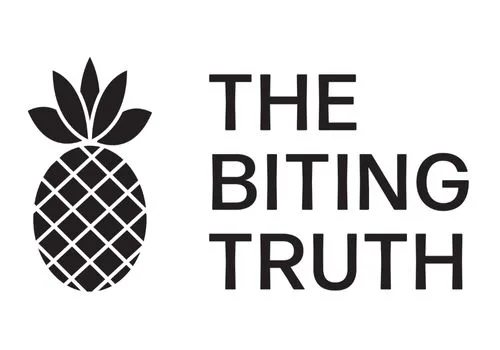
Whether it affects you or someone close to you, you’ll know that Polycystic Ovary Syndrome (PCOS) is a challenging condition. The good news is that lifestyle factors, in particular food and nutrition, hold the potential to positively influence health outcomes and empower those with PCOS. It’s time to change the way we look at disease and come to be invigorated by the choices we make each and every day. This can all start with what we put into our mouths!
What is PCOS?
PCOS is one of the most common medical conditions in young women. In fact, 1 in every 8 women of childbearing age is affected and unfortunately, many cases remain undiagnosed. In a nutshell, PCOS is a complex endocrine disorder that involves an imbalance of one or both of the following hormones:
- Testosterone (the male sex hormone) is higher than it should be
- Insulin (the hormone that helps to store energy after we eat carbohydrates) is higher than it should be.
What are the symptoms?
Women may experience some (not necessarily all) of the following symptoms:
- Lack of or irregular periods
- Struggling to fall pregnant
- Loss of hair from the head
- Excess growth of body hair
- Acne
- Deterioration of mental health
- Difficulty in losing weight
Insulin Resistance Explained
At least two-thirds of women with PCOS also have insulin resistance, hyperinsulinemia and metabolic dysfunction. These characteristics are very similar to those experienced in Type-2 Diabetes and so the mechanisms to treat and manage the two often overlap. But what exactly is insulin resistance and what can be done about it?
Glucose is vital to our health because it’s the main source of energy for our cells. Most glucose comes from carbohydrates in foods we eat. During digestion, chemicals in our stomach break down carbohydrates into glucose. The glucose is then absorbed in our blood stream. The pancreas, an organ near the stomach, responds to the presence of glucose by releasing a hormone called Insulin. Insulin is like a key unlocking the door to your cells so that glucose can actually enter. Once glucose enters your cells, the amount of glucose in the blood falls. If you have insulin resistance, your insulin is not working properly (i.e. the key is having trouble unlocking the door). This means your body produces more and more insulin to overcome this inefficiency and unlock the door to let the glucose in. This large quantity of insulin keeps your blood sugar normal, but is not good for the rest of the body.
High concentrations of insulin are thought to stimulate androgen production (e.g. testosterone) and exacerbate many of the associated features and side-effects of PCOS. Insulin is also a storage hormone, and having excess amounts floating around means that excess energy from the food we eat will be stored as fat. Over time, this can lead to unwanted weight gain and an increased risk of developing diabetes and/or heart disease. This is why it is essential that women with PCOS control the amount of glucose (carbohydrates) going in to their bodies and improve their insulin sensitivity.
Healthy Eating Tips
Here are 3 of the most important nutritional tips to help you better control your blood glucose levels, improve your sensitivity to insulin and manage PCOS.
1. Reduce your sugar intake. Now we are not advocating that you clear your house of anything and everything that contains sugar! However, in light of what we have discussed, it is important that you be mindful how much sugar is coming in through your diet to minimise the workload of your insulin. The World Health Organisation (WHO) recommends that adults reduce their added sugar intake to less than 6 teaspoons a day (~25 grams) for optimal health outcomes. To put this into perspective, 1 tablespoon of tomato sauce can have around 1 teaspoon (4 grams) of added sugars, while a single soft drink can have around 10 teaspoons (40 grams)! Choose whole foods that are minimally processed, such as fresh fruit and vegetables, nuts and seeds, fish, milk, cheese, yoghurt and lean meats. When purchasing packaged foods, flip over to the Nutrition Information Panel and choose products that have less than 15g sugar per 100g. It’s also a good idea to check the Ingredients List to see if sugar has been added to the product. A lot of the times it will be, even when you don’t expect it! Click this link for extra help with reading food labels.
2. Choose quality over quantity. Carbohydrates are important when the goal is to stablise the amount of glucose released into the blood. It is important to choose carbohydrates that are high in fibre, low GI and packed full of nutrients! These might include green leafy and cruciferous vegetables (spinach, kale, cauliflower, green beans, Brussels sprouts), pumpkin, sweet potato, wholegrains, legumes, brown rice and oats. Aiming for 5 serves of vegetables and 2 serves of fruit everyday is a great challenge to ensure that you’re getting in plenty of nutrient dense carbohydrates. Another great tip is to fill HALF your plate with non-starchy vegetables at dinner time. Try to avoid white varieties of breads and cereals that are high GI and tend to release glucose into the blood are lot more rapidly!’
3. Choose healthy fats. Adding high quality fat to your meal can actually aid digestion and slow the release of glucose from carbohydrates into your body – the common theme here! Include fats in your diet from whole, unprocessed foods such as avocados, oily fish (mackerel, salmon, tuna), eggs, raw unsalted nuts, nut butters and olive oil. When purchasing fats and oils, check the label and avoid products that have been “refined” or “hydrogenated” as this tends to mean that trans fats are present.
Last but not least… Exercise!
Exercise is key to a healthy lifestyle and PCOS management as it can improve your muscles’ sensitivity to the hormone insulin. Increasing your total muscle mass will mean that your body has an increased capacity to remove glucose from the blood. You should aim to do around 20-40 minutes every day of activity. Remember – physical activity is not just running on a treadmill or pumping weights at the gym, but can include a variety of activities like dancing, swimming, walking your dog and carrying your heaving shopping bags around too (there’s another excuse to go shopping if you needed one)!
Final Words…
So now you should be sitting up a little taller and feeling a little more positive about what you can do when it comes to PCOS lifestyle management. The strategies provided are a broad guide to get you started, and we strongly recommend that you visit a qualified Accredited Practicing Dietitian (APD) if you are seeking more tailored, individual advice. Feel free to contact us here for more information.
—
For more information on PCOS, here are some links:
- PCOS and Diet: How Food Can Help – The Huffington Post
- Food and PCOS – Australian Healthy Food Guide
- Lifestyle Changes Beat Dieting to Manage PCOS
—
This article was written by The Biting Truth team with the help of Melissa Meier and Jessica Turton.
